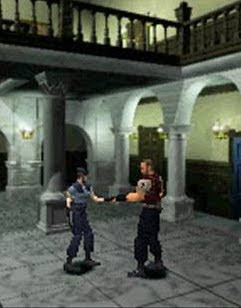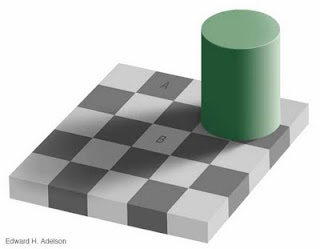 Inspired by Ron Gilbert's article "Why adventure games suck" I decided to do my own list. To be fair I do not think that all horror games suck (in fact some are really good!), but there are some common problems that pretty much all the games have. These issues hold horror games back from using the medium's full potential and I am convinced that games can be a lot more scary and engaging than what we have seen so far.
Inspired by Ron Gilbert's article "Why adventure games suck" I decided to do my own list. To be fair I do not think that all horror games suck (in fact some are really good!), but there are some common problems that pretty much all the games have. These issues hold horror games back from using the medium's full potential and I am convinced that games can be a lot more scary and engaging than what we have seen so far.I also want to point out that the Penumbra games all have their share of flaws from the stuff below and are by no means exceptions from the rule. However, it is always a start to notice what kind of flaws that exist, so that one can work upon fixing them. It is our goal that our upcoming game Amnesia will minimize on these sucky aspects! Now that I have lined up the mistakes, it would be quite stupid to step into them.
Control is taken away when things get scary
"The protagonist enters a seemingly empty room, starts looking around when suddenly a strange sound is heard from outside. Something is about to enter and it's time to hide. At this point the game removes the player's control and a cut-scene is started showing how the protagonist hides and just barely manages to remain unseen by the approaching monster."
This is a very common situation and I have seen it in just about every horror game that I have played. Just about when things are about to get really scary, the player's control is taken away. Why does this keep happening in games? It's been over 10 years since Half-Life skipped having cut-scenes and it seem rational that all horror games should be using this approach by now.
I think the major reason for still using cut-scenes like this is because a certain scenes requires "special moves" (like hiding) from the protagonist and/or will lead to a strange situation if the player does play along (tries to kill the approaching monster or similar). This does not mean that the cut-scenes are needed though and scenes can be rewritten or game mechanics can be changed to make it work. It is also possible to allow players to do really stupid decisions as long as they has been given a fairly good hint on what a good action would be. If some of the players insist on walking up to the man seen butchering his victims then just put them up against him in an unwinnable fight. Next time they should be a lot more careful...
Another reason for designers to add cut-scenes is because they do not want the player to miss something. In horror games this could mean a shadow briefly seen in the distance or similar. Often this is very sloppy design and some simple changes can make the shadow almost impossible to miss. Let's not forget that it is an interactive medium either and it is often trivial to add some line-of sight check and activate the shadow when the player is actually looking in that direction. Sure, a small percentage of the players might miss it, but that is something one has to live with when working in an interactive medium.
If one needs to have a cut-scenes in a horror game, then make sure not to have it during the actual horror segments. Doing that is like having Mario enter a cut scene when he is about to jump from one platform to another.
Combat is designed to be fun
Many horror games are fairly combat oriented and because of this a great deal of design time is spent making sure that combat is fun. If players will spend a lot of time killing stuff, is it not reasonable to make the combat fun? Unless the goal is not to make a really scary horror game then the answer to this is "NO".
If fighting the monster is the best part of the game, then this what players will want to do. In horror games, where enemies almost always are the main mechanics for making the player scared, this approach is counterproductive. Players are supposed to fear the monsters, but if killing them is what makes the game worth playing then enemies are bound to be a lot less scary. If one gains positive feedback whenever an enemy is encountered then approaching sounds might give a reactions like: "Oh, that might be an enemy! Goodie!". This is of course the completely opposite of what a horror games strives for.
But if combat is not "fun", then will it not be boring, meaning that the game will be boring too? I would like to answer this with a loud "NO" this time too. First of all, combat can be "unfun" for many different reasons and some reasons are better than others. For example, the combat still needs to be pretty fair, responsive and not feel too frustrating. A good way to make the combat feel unfun is by resources, an example being System Shock 2 where ammo is very sparse and weapons will degrade (and eventually break) whenever used. In Silent Hill (the older titles anyways) combat use responsive controls but aiming can be imprecise and a bit clumsy, making it feel more like a last resort than the basis of fun in the game.
These examples have their own flaws, but point at least in the right direction. Also, with all the problems that combat give rise to, one might consider skipping it altogether. Even though it might be hard to believe, violence is not the only way to drive gameplay...
Overusing the same enemy
Usually a monster in a horror game has some kind of spooky encounter at which they are quite frightening, but then an hour into gameplay, they have become cannon fodder. For some reason, designers seem to think that all hope is lost after this encounter and that they might as well scatter thousands of copies into the rest of the game. Or perhaps they think that if it was scary once it will be scary every other time too (embarrassingly, I am guilty of this myself in the past). Horror is tightly connected to the unknown and if something becomes too familiar then the impact that it first had will be lost. This means that for an enemy to remain scary, the way it is presented needs to vary and the player can not be exposed to it too much. Players will eventually learn patterns, what to expect and the moment this happen, pretty much all scariness connected to the enemy is lost.
I think the main reason that this flaw is present in just about every horror game is because content is so expensive and time consuming to make. Players need to have something to do when playing and the easiest way to do this is to scatter enemies around the levels. This is far from good horror design though and just leads to repetitive and predictable gameplay instead a truly frightening and engaging experience.
The monster is always shown
A well known fact in horror is that the audience's own imagination is the greatest asset. It allows the horror to be more vague and people to project their own fears into the experience. Because of this, many books and movies keep the monster hidden in darkness, not revealing its true form until the very end or not at all.
In games it is quite different. Sure, before a monster is shown there can be shadows and strange sounds, but as soon as it comes into play it's there in full high-poly detail (preferably with lots of slime and/or gore). It seems like horror games are way too anxious to show of the monsters and there are extremely few games that uses an unseen enemy as a gameplay device (and not just some foreboding ambient piece). I suggest that games should add proper gameplay mechanics to an unseen monster and if possible even refrain from showing it at all!
Some might wonder how an enemy that is not seen can affect gameplay, if it can hurt the player, surely it must be visible? I do not think this is needed and in Penumbra: Black Plague we had an enemy that was entirely sound based and never shown in the game. It was far from perfect and had a plenty of flaws but it is at least a step in the right direction. If horror is to reach new levels in games, the fear of the unknown must be used to the fullest!
The horror is slapped on as a side thing
The final reason why horror games suck sort of tie in to all of the above. For some reason it almost always seems like the horror is an afterthought in games. First the game main gameplay design is made (third person shooting, Myst-like puzzle adventure, etc) and then some kind of horror theme is slapped on top. Surely this is not the way horror games are designed, but to design the gameplay mechanics without considering the horror aspect seem fairly common. FEAR is the dictionary example of this where the horror elements are clearly separated from the main gameplay in a very obvious way. The player goes through a section of John-Woo-like shootouts and then after that is a horror section where a scary girl shows up or similar. It soon obvious that these scary sections never pose any threat to the player and the horror factor is greatly decreased. The combat also does nothing to increase the horror, instead it just lessen it by making the player feel everything but vulnerable as wave after wave of enemies are mowed down.
This divide in design is present in pretty much all games though and a lot of the gameplay is designed in isolation from the horror elements (as mentioned above, the most common thing is the entire combat system). I think this problem is fairly common in other games genres too. Instead of trying to combine the gameplay with the story told and feeling that are to be evoked, they are designed separately and then forced together. If games are to reach new heights in terms of telling stories and being emotional than this needs to be improved upon. One can not see the game as a story part and a gameplay part, but have to realize that they both need to support each other.
Until this happens in horror games (and other genres too) they will continue to suck*.
*or at least not be as good as they could :)











